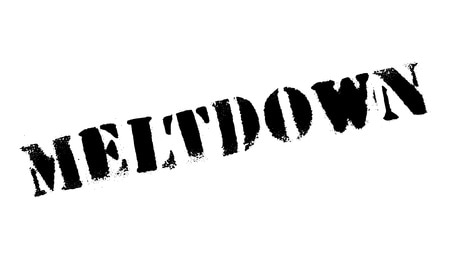|
Last year, I wrote a post on what to do when someone around you gets triggered. In the spirit of good leadership, I’d like to spin it around this time and really focus on what to do when YOU are triggered in a situation.
What is a trigger? Triggers are a little different than getting justifiably angry or emotional at something. The main difference is that triggers show up when something seemingly normal has a very strong impact on you, to the point where you might feel yourself lashing out or wanting to run and hide. (In other words, the reaction is disproportionate to the stimulus, as touted author and internationally known psychologist Daniel Goleman would say). Some people respond by fighting, and others respond by fleeing. Adrenaline and cortisol flood the body. All rational thought goes out the window. Simply put, your pre-frontal cortex, the part of your brain responsible for higher executive thinking, is no longer in control. Your mammalian brain (amygdala), however, is. You ROAR! driven by your basic animal instinct. So the question is, how do we manage our triggers? We all get triggered by something at one time or another. Here’s a secret about skilled leaders: they know how to process, manage and recover quickly from a trigger. Here are some tips on how to get started. 1. Become present to the feelings in your body & BREATHE!!! Realizing you are triggered is the first step. Often, you’ll know because it will feel like your blood will start to boil. You may feel tightness in your jaw, or in your gut. I remember getting triggered once by an employee. I don’t remember what the trigger was, but I do remember the feeling – one of anger and frustration. My speech got terse and my neck tight. What I wasn’t aware of at the time was that I was triggered. So what can you do if this happens? First, really become present with the feeling, and notice it. Notice where you might feel tense in your body (like your jaw or your neck might freeze up) and breathe into it. If you happen to find yourself getting triggered in a space like a meeting, take a break, give yourself some time to regain your composure, and then come back. Space is your friend. One technique that is really helpful for leaders is to say, “I don’t like how I’m showing up right now. I want to be at my best for this conversation. Let’s continue this discussion at another time.” Or, "That's an interesting idea. Let me check in with my other colleagues and I'll get back to you on this." Giving yourself space to be present to the feeling and breathing into it will help you manage it. Becoming self-aware of your triggers will slowly help you to manage them. Unless you have awareness of your triggers, you can’t address them. 2. Do complex math Well, not really. But counting is a very simple technique to use when you are being triggered. The advice says to count to 10. When you are triggered, your pre-frontal cortex gets hijacked by your mammalian brain, and you are essentially in fight or flight mode, our most basic, animalistic survival instinct. Counting activates the executive function of the brain. I started counting up in 3’s, because it requires more focused thinking and thus requires more of the executive function to do it. (And it did wonders the other day as I waited for 25 minutes while the Office Depot worker continually kept botching up a credit transaction while I was trying to check out. I drove home counting in 3’s and soon I was merry!) By trying to call in that function, you are essentially attempting to bypass your mammalian brain and bring yourself back into using your executive function. You can also write down the numbers, spelling out each one. Note that these are just techniques to use in the moment. You’ll likely need to give space to process the emotion from the trigger after the fact. If you find yourself triggered and about to write an e-mail, STOP. You will be writing a mammalian-brained e-mail. Take some time to stop, breathe and process before writing that email. Or, write it and keep it in your drafts folder. Go back to it in a day or so when you’ve regained your executive function and then send. 3. Stay curious Another way to deal with triggers is to get really curious about the other person that triggered you. If the person is making you flip your lid, you want to get to the point where you can start to take steps to separate their action from their intention. Their action may be making you flip out, but perhaps that was not their intention. If you lash out at them and say they are being this way or doing this because of x, you may find yourself in a vortex of projection. And trust me, you’ll be revealing more about yourself in your words than about anyone else. Here’s some suggested language to use: “I’m curious: what did you mean when you said <fill in the blank>?” or “I’m curious: when you did this, what was your intention?” In my coaching work with clients, what I find is that most of the time, people are not out to trigger others on purpose. However, the person doing the triggering often can benefit from learning to be more self-aware of their actions and how they may impact the triggered person. The person triggered can work on starting to separate the action from the intention. 4. Get to the bottom of it! This is a big one. What you have to understand is that triggers are often associated with experiences from our childhood that caused us to feel threatened or fearful. The mammalian brain kicks in and does everything it can to keep us safe, because that feeling or emotion is just too painful for us to handle. Most of the time, those triggered feelings relate back to feelings of being unloved, worthlessness, and abandonment (I know – grim). BUT!!! And I say this again: everyone has triggers – nobody is without them. Understanding the origins of your triggers can really help shed new light on your relationships, and empower you to take control and responsibility for your own reactions and behaviors when you feel triggered. It’s hard to trace triggers back to their origins, but there are some effective coaching techniques that can help you uncover them. Often, when I help a client trace back the origins of a trigger, they cite that the next time they are triggered, the trigger does not have nearly as much of an impact on them as when they were not aware of their trigger. These are some tips to try. And if you try and don’t always get it right – that’s OK. We are all human, and making changes in our behavior takes some getting used to. And sometimes after mastering one trigger, we’re faced with a new one and have to start all over. Heck, I still discover new triggers in myself from time to time! The point is to try, and to get better at understanding and managing yourself. You can re-pattern the reaction you have to the stimulus. When do you get triggered? How are you able to effectively manage your triggers? We’d love to hear about your experiences in the comments section below! Like what you read? Sign up for my monthly e-news!
1 Comment
Have you ever had the experience of wondering how is it that someone else is able to bring an idea to life so quickly, while you are left feeling stuck in the routine of your life?
Do you ever start talking about your “closet dreams” – the big, bold ideas and dreams you were too shy to share with others, but that make you feel complete, happy and fulfilled? Do you notice that after talking about them, you quickly reality check yourself because you have a family, a mortgage or because you convince yourself you aren’t a risk taker? I have news for you. 9 times out of 10, it’s not that it’s not possible. Rather, it is because of two things: 1. Our brains are wired to accept a certain status quo of a life and circumstance that has been patterned into us. The thought of changing or disrupting that status quo is thwarted by very strong neural networks. That’s the neuroscience of it, in a nutshell. 2. And secondly, everything seems too big and impossible if you think of just the big picture. You need a step-by-step plan of how to get where you want to go. But how can you start getting around your brain’s tendency to default to its regular patterns? How can you start building new patterns to get yourself to not only see, but to believe and more importantly to FEEL what is possible with a transition or new idea? What if you stayed in the resonance of possibility, and never flipped back to the dialogue of why things are not possible? Here are exercises in perspectives that will help you explore where you might be with a current transition or new idea, and ways to exercise your neural pathways on what’s possible. 1. Get in Touch with Your Current Perspective: Think of where you want to transition to, or what your new idea is. How do you feel about it? Scared, frustrated, tired, like you have no way out? Give this perspective a name. If you feel scared, call it the Dracula perspective, or maybe Horror Movie perspective. Make up your own. Once you have identified that perspective, really embody it. If it’s frustration, what does it look like in your body to feel frustrated? Does your posture shift? Do you have a certain expression on your face? Do you feel it in a certain place? What does the terrain look like? Is it rainy, gloomy. dark or cloudy? Now ask yourself what is possible for you to do with respect to your problem from this perspective. What comes to you? You may or may not be surprised to see that you either generate ideas or you don’t. The point is to get in touch with how your current perspective or mind state is serving you now. 2. Try a New Perspective: Now, try stepping into a new perspective. For example, imagine your favorite color. How does it make you feel? Calm, excited, energized, safe? If you had to embody it, what would it look like? Get in touch with how you FEEL about it. What does the terrain look like in this land of color? If your color is yellow, is it warm, sunny and hopeful? If it’s blue, is it calm, expansive and soothing? Really stand in the land of your color. Once you get to the state of truly embodying this feeling, look over at your idea or transition. Then ask yourself, “What’s possible from this perspective?” What comes out? Is it different than what came to you in your scared, frustrated or tired perspective? What do you notice? Are the ideas you are generating different? 3. Ask Yourself What You Can Do: Explore a few more perspectives. When you get to one you really like, ask yourself this: What is the one big step I can make from this perspective towards moving forward with my idea or transition? See what comes to mind. You might even want to do this with a friend, spouse or family member. Have them ask you the question. As we shift perspectives in our mind, we actually have the power to shift what is possible for us in our lives. When you shift your thinking, YOU change. And at each thought and exploration, you are patterning new neural pathways. Believe it or not, this is not wavey gravy stuff! This is actually built on science. Psychadelic, I know! The best thing about this is you can both physically and mentally step into whatever perspective you like. If you don’t have a blue room at home, imagine one. But if you want to explore walking as a perspective, and what it feels like when you are moving and out in nature, go do that and think about your idea. See what happens. The thing is this – you can choose the perspective you want to be in. Your actions change, and how people relate to you begins to change. Perspectives are very valuable things, and your ability to go from idea to launch of whatever it is you want to do will be directly affected by whatever perspective you CHOOSE to take. If your perspective is scared and hopeless, you’ll generate just those ideas. If it’s a cautious calm, you will generate different insights. If it’s excited, warm and happy, you may get to other insights. So the next time you’re dreaming big, instead of defaulting to the I-could-never-do-that perspective, challenge the can’t and instead, shift the perspective. Have you ever struggled to shift a perspective and found that when you did, you were able to see something differently? What did you learn? We’d love to hear your thoughts! Like what you read? Subscribe to my newsletter!
Not too long ago, my coaching world was full of robust leaders on their A-game, moving their teams towards new projects, programs and innovations. In but a few weeks, these once burgeoning leaders have found themselves facing the bi-polaresque rollercoaster of quarantine, trying to keep themselves and their teams together, if even they still have a team, or a job, for that matter. Below I share some themes that have emerged in my coaching conversations with managers in the midst of COVID-19. Some ideas may seem counterintuitive. Most are based on an understanding of neuroscience with the goal of focusing on the whole person and helping to keep the brain and body in balance. 1. Lower your expectations around productivity. Yes, as anti-capitalist as this sounds, it’s essential at this time to restructure expectations around productivity. For one, the work environment has changed so drastically for everyone. If people came into an office before and now they no longer have a steady work environment, there are so many more factors that could interrupt their productivity. They may have kids at home. They may be managing stressful relationship dynamics. They may even be a victim of domestic abuse. Expecting the same level of productivity as you had before is unreasonable. For this philosophy to really be effective, it has to be communicated from the top. From there, the message will trickle down to managers and their teams. If you are feeling pressured by your manager, that stress and pressure will bleed out to a team already feeling stress and so on and so forth. 2. Manage people according to how over or under stimulated they are. Amy Arnsten, a rad neuroscientist out of Yale University, has done very interesting research on the Prefrontal Cortex (PFC), the part of our brain responsible for higher executive functions such as planning, good decision-making and strategic thinking. The brain, being an energy efficient organ, always seeks to be in balance. Arnsten’s research centers on how the PFC is balanced by two main neurotransmitters - norepinephrine (a fancy way of saying adrenaline) and dopamine. To illustrate this, Arnsten created an upside down bell curve. The right of the peak of the bell represents increasing stimulation in the brain. The left of the beak of the bell represents decreasing stimulation. The center of the bell curve represents optimal balance of the cortex with men falling slightly to the left as their default balanced state and women right in the center. BeAbove Leadership furthered this research and translated it into a coaching tool to help individuals understand where they might be on that curve at any given time. Using this coaching tool in my own practice, I have been seeing managers struggle with team members being on opposite ends of the curve. In other words, their team members are either falling too far to the right and are completely over stimulated and out of balance, or too far to the left and completely under stimulated. No matter which side they fluctuate to, THE COGNITIVE IMPAIRMENTS ARE THE SAME: poor decision-making, foggy thinking, and lack of empathy to name a few. Take mental note of where each of your team members are on the imaginary bell curve. Team members with kids often are falling to the far right on the curve. For them, it is important to figure out a way to reduce their load and have less expectations for their work. For team members with less stimulation, the challenge is to induce more goal directed behavior to increase the dopamine and adrenaline to help bring them up to balance. Goal directed management can mean setting weekly targets or goals for them adjusted to their work situation in the event their longer term goals are on hold due to lockdown. You can check in with them on those targets or set up accountability structures for them with their other colleagues. This way they can work together and check in on whether they have been able to accomplish a goal or project. Helping your employees to regulate their PFC now may be the best preventative step to ensuring they don’t come back to the “new normal” drained, exhausted and out of balance. 3. Create certainty where you can. Offer rewards. Dopamine is a neurotransmitter that is released IN ANTICIPATION of a reward. In other words, if someone has something to look forward to, like a trip, it’s a dopamine inducer. Once the reward is received, dopamine levels go down. Need convincing? Check out Robert Sapolsky, Standford Professor of Biology and Primatology’s lecture on dopamine here. Wonder why people are struggling so much to even get work done? Projects once moving forward are now on hold indefinitely. Dates can no longer be set in stone. There is an unknown as to when the lockdown will effectively end. A stake cannot be put into the ground. There is nothing to look forward to. No dopamine. Again, this leads to imbalance in the PFC. Understand that without firm dates, or concrete things to work towards or ANTICIPATE, there is less dopamine. Think of what you can focus on that is concrete or set in stone. Perhaps smaller projects can be created. Perhaps you can game-ify a project and offer a small reward to your team if they successfully complete it. It’s important to note that some team members may need a high risk, almost impossible challenge, to elevate their dopamine levels, especially if they are highly capable and super under stimulated. For others, it could be more of a structured call to action where as a task is accomplished, there is some type of reward, or acknowledgement. What could your team be in anticipation of that actually can occur on some concrete date at some concrete time in the near future? Is there a reward you can offer them that they may get if the project or task is done? 4. Practice empathy. Be inquisitive. Putting yourself in the shoes of your team members will go a long way in the future towards a workforce who is already struggling with brain dysregulation. The ability to empathize is really an ability to try to feel what your team member is feeling. What’s it like to homeschool 3 kids if you only have to worry about one (or none!). Have no idea? A simple inquiry asking them what it is like for them to be where they are at, can bring you tremendous insight. And understand there may be unspoken dynamics they may not be at liberty to share with you, including domestic abuse, existing mental health issues that may be exacerbated by lockdown, and even addiction issues. Asking into your team’s situation is important. Here are a few check-in questions you can use that may prompt some deeper conversation. I send these to my own clients before our coaching sessions as a check-in. Recently one of the managers I coach said she used these as check-in questions with her team, which resulted in very productive conversations: · What have you accomplished since our last meeting? · What did you want to get done but didn’t? · What feels most challenging this week? · What are you connecting with most this week? · How are you feeling? · What are you noticing about yourself? 5. Create small ways to appreciate your team. There is a host of neuroscience literature written on the benefits of feeling and expressing gratitude and its correlation to happiness. Appreciation can take the form of words of affirmation, actions, or gifts. It might even be worth it to ask your team members how they like to be appreciated in this time. Appreciation can even be stated in honoring everyone that shows up to an online team meeting when they usually are done in person. Early on in the lockdown, one of the managers I coach planned to parcel small gifts to her team members, just to let them know she appreciates them. Even better if you can send something from a local small business to your team, to support the local economy and let your team know you really value them during this time. The strategies I’ve shared above came out of actual coaching sessions with managers I worked with during COVID-19, all of whom were adhering to shelter in place in the United States. I encourage managers as well as executive leadership to utilize these coaching themes in the next phases of the Coronavirus pandemic to mitigate the mental and physical impacts of the quarantine. Like What You Read? Sign Up For My E-News!
When I was about five or six years old, I was with my family in a New Jersey mall, perusing the aisles of a card shop. The next thing I remember, I could not find my family anywhere; they had left the shop without me. I remember walking outside of the shop in a daze, trying to figure out where they went. I eyed the entrances of the stores nearby as well as the walkways, but still nothing. My body froze, as if time slowed down. My throat tightened and my vision narrowed. I could only see what was immediately in front of me. I began to walk in and out of the adjoining stores, holding back tears as I felt a surge of panic come over my body.
I don’t remember how long I was lost for, but I eventually reached a shop, went in and found them there browsing items of the store. I casually walked towards them, fighting back my tears at the shame of being forgotten and left. I surreptitiously inserted myself back into the scene, as if nothing had ever happened. I think it was more traumatic for me that they realized I was never missing in the first place. Anything could have happened. I could have wandered into the hands of the wrong person. The thought of that was terrifying. Unfortunately, this same trauma would be re-triggered through my teenage years. My mother would forget regularly to pick me up from appointments. Sometimes I would find myself waiting outside alone at night for her to come. As this happened, my body would move into a freeze. I would find myself hardly able to speak. Instead of showing concern and remorse, my mother would lash out in anger at me, like adding salt to a wound. Every time I was forgotten, it would take me back to being that lost child in the mall. In the field of all the possible traumatic and God-awful things that happen to children, this may seem inconsequential. My point in sharing this particular story is how a trauma from childhood can so fundamentally alter the nervous system response for decades of life, and show up in our relationships and in our leadership. Our bodies keep score of our traumas. Subconsciously, we will keep recreating traumas in our lives until we heal them. My storybook is filled with endless tales of abandonment, mostly from choosing friends and sometimes lovers with which the wounds would be recreated. So how did I start to mend this wound that does not seem to go away? First, some context: Our brains are wired for safety, connection and respect. The nervous system will do what it knows to feel safe. And when we don’t feel safe, connected or respected, we adapt accordingly into a fight, flight or freeze response. So the trick is to open ourselves up to finding a different response to our trauma. But it’s not as easy as it sounds. What I learned is that your body has to literally FEEL it. Your nervous system has to actually FEEL another option is viable. Else you will just default down a past response pattern. In my case, my challenge was to pattern a different response than just to shut down and go into fight, flight or freeze. As an example, a friend of mine unexpectedly abandoned me when I was in a most vulnerable state with my health. My nervous system went on overload. The tears flowed. I wanted to hide. After days of self-consolation, I told myself, “this is partly my trauma and I have to own it.” And I did the following: 1. I changed the way I looked at what was happening. I told myself my nervous system was on overload and is doing it’s damned best to protect me from harm. What this reframing did was to cut out the shame of my response. It allowed me to embrace my biological wiring to respond to the trauma; even if it’s not the response I had wanted to have. In short, I had compassion for myself and the young part of me that was hurting. 2. I gave myself context. When you are a child, something can feel so traumatic because you lack the context to understand why it may have happened. As adults, we have the benefit of understanding context. In my case, I stopped internalizing other people’s behaviors to make it mean something about me. Instead, I started to understand it was more about them. This was transformative growth for me. 3. I got present to what I was feeling physically. In working with a somatic coach, I got help to become present to what I was feeling. One thing I noticed was that my gums would get sore – really sore, likely from the inflammation of whatever stress hormones were being released into my system thinking about the incident. As well, one of the defining things about my particular trauma is the loss of my voice. I am unable to talk or express myself in the moment. With her skilled help, we explored finding a more grounded feeling in the body, and then exploring how I might respond from the space and place of feeling grounded. It has been one of the most transformative moments for me in my own healing. [1] 4. I practiced. Practice makes perfect. When we are re-patterning new ways to respond to old wounds that get triggered in us, repetition is our friend. Perhaps the universe will keep recreating the wound for us until we get that response pattern as a strongly defined neural superhighway in our brain. The legacy of our childhood traumas shows up in us as adults and consequently, as leaders. We may not always be aware of what part of our life experience comes into play in our present moments. Being brave enough to name and delve into our traumas and heal them can result in more freedom, better relationships and better leadership down the road. [1] I do not write to insist coaching is the answer to healing all childhood traumas that show up in us as adults. Certainly there are traumas so grave that require very different types of long term therapy. Many of my clients work with other providers in conjunction with their coaching to assist them with healing past traumas. Like What You Read? Sign Up for My Quarterly E-news!
One of my surfing friends in California told me earlier this year I had to check out a little town called St. Jean De Luz in Basque Country, France. In addition to being a quaint Basque town, there is a wave there that breaks on a particular swell. So, in November, I made my way towards St. Jean De Luz and the surf break with some friends. As I walked down the beach at sunset taking in all the beautiful colors and reflection of the sky and the water, I realized I had seen this place before.
I used to do a meditation a few years ago where I’d imagine a scene somewhere in Europe. I wasn’t exactly sure where it was but it could have been coastal Italy. There were old buildings cascading the coastline overlooking a bay that had tiny rolling waves in it. I’d imagine myself in the sunset bobbing up and down in the water, taking in the view. The picture I had envisioned in my mind’s eye from this meditation was now here right in front of me. I almost couldn’t believe it.
The subconscious mind has a way of directing us to shape our reality. Our mind has a sort of internal GPS, if you will. For this reason, I cannot stress enough the importance of vision and reflection. When we reflect on experiences, we move memories from one area of the brain to another, which helps us use those experiences towards making larger contextual decisions in our lives. So, in the spirit of vision, I wanted to share some tips and tools with you for your own year-end vision and self-reflection. These are tips and tools I’ve picked up from my own processes and from coaches I have worked with personally. They can be used for yourself, and also as a fun exercise with your teams. Step 1: Answer these Reflection Questions
These are from coach and colleague Cynthia Sumner of True Nature
Step 2: Set Your Intentions for The Year to Come
Write down each of these areas of your life. For each one, rank how fulfilled you feel on a scale of 0-10 next to each area. Zero means it is non-existent in your life. 10 means you are completely fulfilled with that area. Then, write about that area and what made you choose the number you did.
Next, for each area, set an intention for yourself for the New Year. What intention would you have to set for each area to raise the number at least 1 point? Take, for example, the category of friends. I will give myself a 7. Why? This year has been about deepening existing connections with my friends, and opening more space to celebrate with my friends. It has also been about making new friends and connections on my travels without losing connection to my friends at home. It has also been about leaning on friends, and feeling grateful for my connections with them. The intention I’d like to set for 2019 for my friends is to be generous. I want to deepen my connection with friends through increased generosity with my time and resources. Got the picture? Great! Do this for each category. Step 3: Help Your Team Set their Intentions
Want to use this as a reflective end of year practice with your team? Try these categories instead, taken from a professional wheel of life tool created by The Coaches Training Institute:
Step 4: Create Your Vision Using Visuals
Though this is optional to the process, I’d just like to stress how powerful it is to move vision from thoughts and written words to images. There is something powerful about an image that the brain can really grasp onto.
Gather images and words from magazines and clippings, or other art that appeals to you. Images can include family pictures, quotes, and other meaningful things too (that you don’t mind gluing). Don’t think too much about it. Just go with your gut and do what feels easy and FUN! For magazines and visuals, consider going to your local library. Invest in nice paper from an art supply store. Consider using paper with textures and designs. DO NOT be stingy with your vision board. Think of this as a piece of art you are creating for your space, home or office, one that will invite discussion and curiosity from friends, family, co-workers, or employees who may visit you. You may also want to do this with your team as a fun exercise. Get out the art supplies and have a fun session helping people create visuals for the intention and vision they’d like to set for themselves in your business or organization for 2019. Most importantly, have fun! Here’s to starting the year with intention and clarity! Like what you read? Sign up for my monthly e-news!
It occurred to me the other month that almost every executive leader I know has faced a meltdown at some point in their leadership. Whether it was the nonprofit executive who wept at the daunting task of rebuilding her organization’s entire staff (for like, the 10th time), the small business owner being harassed and taken to court due to a business partnership gone sour, or a financial faux pas leaving the leader of a firm to manage an embarrassing deficit—shit happens. At some point in our human journeys, the systems, pressure, responsibilities, financial anxiety and just sheer workload become too much for people to take, making it impossible for us to hold it all together. In fact, I’m pretty convinced that, until you’ve had a meltdown, (or two, or three) you haven’t yet experienced the true weight of executive leadership. It’s almost like it’s a necessary hazing for effective leadership. But is it? Why do meltdowns happen? To understand them, let’s look at a bit of neuroscience. The Neuroscience of a Meltdown Think resilience. The brain is designed to be self-regulating and energy efficient, and seeks a state of balance. When we are too stressed and our brains are on overload, as I wrote about in “Stress and the Leadership Brain,” we get large releases of norepinephrine and dopamine, the two main chemicals that balance out the prefrontal cortex, the seat of our higher executive functions. And we get releases of cortisol, an inflammatory, stress-induced hormone. As a result, the prefrontal cortex gets knocked out of balance, if you will, resulting in symptoms like lack of empathy, inability to regulate impulses, foggy thinking, poor decision-making and poor memory. In short, our brain’s natural ability to regulate gets thrown off because it is out of balance chemically. Hence, the breakdowns and inability to humanly manage it all. Literally, you are overloaded and your regulating mechanisms are compromised. So, what can you do to keep your head above water and prevent a meltdown? 1. Share power. We usually think about leadership as one captain solely responsible for where a ship will sail. The lone ranger paving the way. By not sharing power, you hold on to more than you can perhaps manage. Your own need to control starts to actually hamper you. Trust me—I’ve been one of those leaders who needed to have personal oversight of everything. Sharing power frees your brain up to take on other things, and builds a sense of buy-in and accountability to results. Of course, the art of this for any leader is figuring out how much to let go and share and how much to retain continued oversight. This is a balance that can only be achieved with your willingness to accept the inevitable mistakes people around you might make in your absence, and trusting that lessons will be learned from those mistakes. Sharing, coupled with a growth mindset of learning from trial and error, is a crucial element in helping leaders manage stress that can lead to meltdowns. 2. Be more vulnerable. “I love being vulnerable, because it’ so comfortable and pleasing to the soul and gets you what you want,” said NO ONE EVER. As tough as vulnerability can feel in our culture, where it is often perceived as weakness, it’s a fallacy of leadership that you as the leader have to always solve for everything. Actually, the more you can admit you don’t know HOW to do something, the more it will free you from obligating yourself to fix it. And that means more brain space for other things (remember what we’re going for here—realistic goals and workloads that don’t send your brain into unhealthy overdrive). It will also give other team members the opportunity to chime in with their expertise. By simply saying “I don’t know” and showing a little vulnerability, you invite in new ideas, perspectives and perhaps a collective way of finding solutions to a problem vs. being the lone ranger needing to fix it. (Note lone ranger reference now twice in this post.) 3. Put a stake in the ground. Remember that old game where a stake with ribbons attached is driven into the ground, and each child would get ahold of a piece of ribbon and frolic around the stake and weave between one another creating a sort of braid around the stake? That’s what I mean here. Defining a stake means that you and your leaders are passionately committed to “dancing around” it and holding it in place. For example, the stake could be quality. It could be integrity. It could be creating community. Whatever you define the stake to be, clarify what it is for your company, or any project, or collaboration. It will help you and your team keep focused so you don’t veer off and start leading into things that do not relate back to the stake, thereby overloading your plate with things other thank the stake, no pun intended. 4. Have someone to talk to. Getting outside support and having someone to talk with on a regular basis can also help you manage overload. Becoming more present to emotions, naming them, feeing them, creates greater integration and resilience. We are constantly regulating one another’s nervous systems. Ever talk with a person suffering from extreme anxiety and find yourself leaving the conversation feeling anxious wanting to ventilate into a paper bag? Ever come across someone who is as calm as a lake and, next thing you know, you get a warm, fuzzy feeling inside and feel the calmness within you? (This has to do with a concept called sense of self, but that topic is for another post.) So if you are on overload, find calming people to talk with—those whose energy can help to have a positive regulatory effect on your nervous system is key. 5. Invest in people and grow the leadership around you. Leaders fill gaps. And well, when the going gets tough and things start slipping through your leadership cracks, you will be thankful there are people around you who have the leadership skills to fill in those cracks. If you are just surrounded by followers of your word, you will be overwhelmed—all the time. Investing in growing leadership capabilities of those around you and giving up some of your power can better ensure gaps are filled when shit hits the fan. And I promise you this—shit WILL hit the fan. Investment means taking time to coach and mentor people in your organization. If you don’t have the time, hire external coaches, send your team members to a good quality leadership immersion program, or give them more responsibilities and coach them to succeed. Your biggest assets are your people. Having strong people around you will help you manage the load better. What did you learn from your leadership meltdown? If you had to do it all over again, what advice would you give?
I come from a background where it was not encouraged for women to set healthy boundaries. In the nonprofit cultures of my time, very much influenced by baby boomer culture, I saw people literally contorting themselves to make things happen. They had minimal resources to try to accomplish things that did not seem humanly possible. Best of luck if you tried to set healthy boundaries in these cultures. Doing so often resulted in subtle backlash from those that saw themselves as "truly" fighting the fight. Unfortunately, this dynamic quickly led to burnout, resentment and unhealthy work cultures.
Learning to set my own boundaries has been one of the most enlightening things. It has also been one of the hardest. Brené Brown, the world’s top vulnerability researcher, said something very profound once about boundaries. She said simply that in all her research, she’s found that the most boundaried people were also the most compassionate. In her book Rising Strong, she makes the case for setting boundaries and posits that resentment comes from giving up our power unwillingly. If the world’s most renowned researcher on vulnerability is telling us this, then why does it feel so hard to find it in the surf–life metaphor? Can you still be one who goes with the flow and also be a little “square” and set boundaries? Life is like a wave. Ride it. Expect ups and downs. OK. Got that. If you don’t like the wave, change your equipment (i.e., your internal surfboard) or get off the wave. OK. Check. Already made that metaphor once. And, oh yeah: Learn to recognize and set boundaries to have a more fulfilling life. Umm, hold up! Exactly how does that translate into my sea of oceanic metaphors? A buoy? Filling up a plastic pool with ocean water? Isn’t this some Western, man-made, left-brained concept? How do you overlay the concept of boundary onto something that has flow at the core of its philosophy? The more I explored this boundary stuff, I realized even the coolest of cool cultures (e.g., surf culture) sets boundaries ALL THE TIME. Most surfers go online now to check surf and ocean conditions through sites that list current and predicted surf conditions. These are based on a number of factors like wind, buoy readings etc. When it gets big, as in double to triple overhead in a Northern California report, you often find the reporter ending their summary with the following: “Be safe and know your limits,” a fair warning to surfers that conditions may warrant a particular degree of experience and skill. It occurred to me that when we look at that report, or scan conditions of the ocean ourselves, we are making a conscious decision of whether to go or not to go, taking steps to protect our safety. And that’s when it all made sense to me: The concept of exercising boundaries is actually more about accessing your own internal wisdom, listening and getting clear with what you are or are OK or not OK with in a situation, or relationship. It’s less about anything tangible at all. As surfers, we set boundaries all the time (well, at least I do). In a culture where it’s rewarded to keep pushing the boundaries on things, it’s no wonder why we as people have a hard time setting them in normal life. After all, boundaries don’t sound particularly sexy—they are the opposite of edgy. They’re very square. But they are so necessary to living and leading in a healthy way. Even extreme athletes, for all they surmount, have their own boundaries. And they differ from person to person. What’s OK for them may certainly not be OK for me. OK so how does this relate to you? If you feel resentment towards something or feel too accommodating, perhaps in a relationship, I invite you to look at how you are setting your boundaries. Below, I offer you a few ways to think about boundary-setting. 1. Realize when something is off. Oftentimes, when we can tune into when something does or doesn’t feel right in a relationship, situation or interaction, that is a sign that we know a boundary needs to be set. Perhaps it is the colleague suffering from a compulsion to make snarky comments that make you feel bad. Or perhaps it’s that friend that always flakes out on a plan at the last minute, leaving you high and dry (and annoyed). Again. If it doesn’t feel right to you, chances are you need to look at it and set a boundary with that person, thing or relationship. 2. Name it. If something doesn’t feel right or feels off, name what feels off. Is it a value that is being stepped on? Is too much being asked of you? Are you feeling overly accommodating in a relationship? If you can name exactly what it is that feels off to you, then you will be more empowered to know exactly what boundary you need to set. An extreme example: I have a friend who abruptly ends calls with her friends the minute she feels her energy is being sapped. Though this is an example of a more extreme boundary, it’s a boundary nonetheless, and she’s clear with herself what’s not OK for her. (I like to use extreme examples because they are easier to remember). 3. Communicate…or not. Sometimes, setting boundaries requires clear communication with someone, and sometimes you can set boundaries without having to communicate at all, simply by changing your behavior. My favorite segue I learned from one of my coaches for communicating a boundary is simply to say: “X,Y,Z doesn’t/didn’t work for me. Here’s what does.” Boom - A simple and powerful way to get your boundary across without sounding needy or complaining. 4. Set your boundary. I had friends that would religiously cancel plans on a whim at the last minute. It would drive me nuts, as I would have blocked off time for them in my schedule only to have them cancel, and it would be too late for me to make other plans. Here’s what I say now: “Just want to confirm our plans for tomorrow. Let me know by X PM if we are a go.” That way, it gives them the out to cancel, and if they do, I have sufficient time to plan something else. Be kind to yourself. Many of us didn’t come from backgrounds where it was appropriate to state and defend our boundaries, and so it is very difficult and scary for us to do so. If you sense something is up with someone—a partner, employee, friend, boss—don’t be afraid to ask into it, and create a safe space for people to share what’s up. Perhaps you might have crossed an unstated boundary without realizing it. Opening up vulnerable and authentic communication can help you both realize the boundaries that are important to you. Where have you had to set better boundaries? How did you do it? Like what you read? Sign up for my monthly e-news!
When I was 20, I was bitten by the classical Indian music and dance bug. Before I knew it, I found myself with a one-way ticket out to Northern California to study with one of the last living masters* of Kathak. Kathak is a dance discipline made up of mathematically precise footwork, swift pirouettes and storytelling. Our teacher was always known for his speed and agility, training us with the utmost rigor and repetition. When people would visit the class, he would pride himself on how hard he’d work us, often pushing us, for example, to execute 108 swift pirouettes in a row without pause. At one point, I remember I spun so out of control I knocked over the halogen lamp in the Fulton and 3rd Ashram in San Francisco where we used to train. Speed and fierceness were high values, and to just keep going, no matter what, was often the lesson. There were times we’d be on a roll, and nothing could stand in our way, egos flying high, adrenaline pumping from the percussive beats and all-around good workout. And then, he’d do the one thing that would completely fuck our shit up: He’d slow everything down. All of a sudden, everything we had trained our bodies to do in relation to executing a composition at a certain speed went out the door. If I had to give you a surfing metaphor for what this was like, it was akin to surfing a thin, hollow wave over a pure reef break on a shortboard, feeling the split second stability of the board that a powerful wave might offer on takeoff, and then suddenly finding yourself on a completely different wave - one that is slow, flat, lazy, and weak, but having to surf with the same board - without being allowed to paddle. All of a sudden, with everything weaker and slower, the board feels wobbly in the weak surf. But now you need some type of precision and skill to make it work in those conditions. Deep inside, I knew this was my teacher’s way of truly testing how well we knew the compositions and how solid of a grasp we had of taal (rhythm), one of the defining virtues on which the whole classical North Indian music structure is based. If the tempo were slowed down, we really HAD to understand the composition, in a totally different way. We had to know precisely where each beat of the composition would land in the cycle of rhythm AND make conscious adjustments to the composition and relate it differently to the underlying rhythmic cycle. We suddenly needed to shift from unconscious competence into a space of being conscious of what we were doing. This required us to be ever more precise given the space of in-between we were now given. Aside from the “be prepared for what life may throw at you” lesson, there was another lesson in this, too. First, a little neuroscience. Let’s start with brain waves. We have 5 known speeds of brain waves—beta, alpha, theta, delta and gamma. Whether we are mentally active, resting or asleep, our brain always has some level of electrical activity. Beta, for example, is where we function most of the day when we are “doing” something, like when we are in our task-positive network. Delta is our slowest wavelength, generated in dreamless sleep and in the deepest of meditation. As my coaching colleague pointed out, the slower our brain waves, the more time we have between thoughts (just as we have more time between beats in a composition when the tempo slows.) The more mindful we can be about our thoughts and actions, the more conscious we become of them. But wait! There’s more! --The slower the brain waves, the more the right and left hemispheres of the brain communicate! So when the tempo of life slows, it forces more awareness and consciousness AND, quite possibly, a more optimal environment for brain integration. I know - Holy Mother of Kali! In thinking about this lesson from classical Indian dance, I couldn’t help but wonder what we miss as leaders when we don’t slow down. By slowing down, we are literally allowing more space between thoughts and creating a more optimal internal environment for conscious, thoughtful decision making. In fact, if you think about it, slowness has virtues not just in the leadership realm. I recently decided to slow down my eating and to chew as much as possible, to consciously be aware of the food I was eating to nurture my body. As a result, my entire experience of eating changed. For one, I become fuller with less food AND I actually enjoy the food more, reveling in every bite and taste. I am also WAY more present to the eating experience. I do not mean to say that speed doesn’t have its virtues, or that quick decisions are always bad, nor do I mean to imply to ignore our intuitive hits. However, to slow down a process while still maintaining balance and grace is something of an art. It requires awareness, consciousness and precision. In the case of dance, it was the necessary training ground that would serve to distinguish the technique and ability of a dance practitioner from the nuances and subtleties of a well developed artist. Imagine what we’re missing when we’re always doing everything fast—from dating, to eating, to running a business, to surfing only fast waves, or dancing only fast compositions. We’re short-changing the many capabilities, perspectives and details the structure of our consciousness offers, limiting how we see, feel and experience the world around us. We’re missing out on this rich space of "in between", and on the insights that come from having to break something down we know so well, and to be in it from a totally difference reference point. It’s no coincidence there is a surge of interest in Eastern traditions that have practices that slow us down. From yoga to meditation to, yes, classical Indian dance and music. These are not just new-agey, hippie-dippie things. We’re in a moment in our culture when we are actively seeking slow. In doing so, we are not just building optimal environments for better, more integrated brains, but, in my opinion, honing real leadership tools. So to leaders out there, I challenge you to slow things down, but to first start with slowing down your own thoughts. You may, in the end, make better decisions and contribute to a more conscious and mindful world. Where do you need to slow it down a notch? What takes you to slow? * The late Pandit Chitresh Das, master Kathak artist, teacher, and performer not only left behind a legacy of timeless teachings in his craft, but patterned the minds of those he touched deeply, cultivating new generations of artists, activists, thinkers, and leaders who continue to be inspired by his lessons and work.
Sleep is One of the Five Pillars of Neuroplasticity
Sleep may be just one of the most underrated things in leadership. Last fall, I began an experimental neuroscience intensive, with 8 other coaches around the country led by Ann Betz, the Research Director of BeAbove Leadership, an organization that has spent the past 15 years researching and teaching the intersectionality of neuroscience, consciousness and coaching. We come together a few times a month to discuss scientific research, popular articles, scientific lectures and talks on neuroscience to better understand and enhance our work as coaches. We spent a month on the topic of neuroplasticity, which, simply put, is the ability of the brain to rewire itself. Sleep is one of the pillars of neuroplasticity, without which it is very difficult to make and maintain neuroplastic changes in the brain. Just think about trying to exercise and build new muscles without eating any protein—it would be very difficult to do. As protein is essential for building and maintaining muscle, sleep is essential for building neuroplasticity. Here are some interesting things that fascinated me about sleep that I’d like to share with you! Sleep Flushes out Brain Toxins Between the 7th and 9th hour of sleep, our brain releases cerebrospinal fluid, a clear liquid surrounding the brain and spinal cord that cleans out toxins from the brain, and sorts through memories that are deemed important.[1] This is one of the reasons I recommend my clients get at least 7 hours of sleep every night, to get the cleaning in to create an optimal environment for brain rewiring via neuroplasticity. Think about it—what happens when you withhold yourself from going to the bathroom? Not great for your intestines at all. When you are not sleeping well, you may be doing that same thing to your brain. Sleep Helps the Brain Replenish Neurotransmitters According to James B. Maas, PhD, and author of “Power Sleep,” the brain replenishes neurotransmitters during REM sleep.[2] Neurotransmitters are simply chemical messengers that enable neuron-to-neuron communication. He says these neurotransmitters are essential for remembering, learning, performance and problem solving. Remember, REM sleep happens in the 6th–8th hour of sleep, so yet another case for getting 7 hours of sleep a night. Think about it: do you want a filthy brain with rusty neurotransmitters that aren’t able to communicate well? Likely NOT going to help you in your leadership very much. Sleep Helps Store Memories When we sleep, the brain stores information in long-term memory through sleep spindles. These are short bursts of brain waves of strong frequencies that occur during REM sleep. REM takes place toward the end of the night, between the 6th–8th hour of sleep, when people are more likely to dream. During REM sleep, Maas says “the brain transfers short-term memories in the motor cortex to the temporal lobe to become long-term memories”.2 He goes on to say that this process can be particularly helpful for storing information related to motor tasks so that these tasks become automatic. So if you are keen on improving your gold swing, get a good night’s sleep. Sleep Deprivation Exacerbates our Fight-or-Flight “Animal” Brain[3] When we don’t get enough sleep, the body interprets this as stress. As a result, our sympathetic nervous system gets activated and induces a metabolic reaction of the body to stress.[4] When this system is activated, norepinephrine and cortisol are released in the body and there is increased amygdala activity. This contributes to sleep disruption, which leads to more sympathetic nervous system activation and more sleep loss. Sleep Deprivation Contributes to Negative Moods Published studies on sleep deprivation date back to 1896. Since then, there have been numerous studies on the effects of sleep deprivation on human performance, feelings and cognition. What the science has found is that all kinds of sleep deprivation—whether long-term or partial—result in negative moods. The most common feelings are of fatigue, loss of vigor, sleepiness and confusion.[5] So, What are My Recommended Best Practices for Sleep? When we sleep, the brain solves problems. So, an effective strategy for sleeping better at night may be to prime yourself for relaxation. Don’t focus on thinking about a problem or something to solve before you go to sleep, as your brain will try to work on that during the night. Instead, try reading poetry, getting lost in a romance novel, listening to soothing music or even doing art. Do something where you are not trying to problem- solve. Focus on getting at least 7 hours of sleep each night. Given that cerebrospinal fluid is released in the brain during REM sleep, it is important to get enough sleep to activate your brain’s natural cleansing system. If you are one of those people who can function on very limited sleep, it may be possible that you enter into REM sleep sooner, and thus feel more rested. I remember after surfing one of the most powerful (and scariest) waves I had ever been on in Indonesia. It was difficult for me to sleep for that night, likely due to the chemicals coursing through my body and my sympathetic nervous system being turned on. My dopamine levels I’m sure were off the charts. If you are a thrill seeker by day, try listening to soothing music or an audio meditation to calm your system. A Yin, or slow-moving yoga practice at night can also calm your nervous system making it more ready for calm and rest. Meditation and focused breathing also help reduce amygdala activity. In short, making sure you get a healthy amount of sleep each night should help with negative moods, reduce amygdala activation (less fight-or-flight), help you store long-term memories and organize networks in your brain that are essential for problem-solving, learning and performance. Where have you struggled with sleep? What strategies have you used to improve your quality of sleep? Note: Thank you to my Neuroscience Intensive coaching colleagues for their time and work compiling and sharing research on neuroplasticity, and in particular to Ursula Pottinga of BeAbove Leadership for her compilation of research on neuroscience and sleep used to help write this post. [1] NIH Research Matters, How Sleep Clears the Brain. October 28, 2013. https://www.nih.gov/news-events/nih-research-matters/how-sleep-clears-brain [2] “Strengthen Your Brain by Resting It.” American Psychological Association, Mark Greer, July/August 2004, Vol 35, No. 7. [3] “Can a Lack of Sleep Cause Psychiatric Disorders?” Scientific American, Nikhil Swaminathan, October 23, 2007. https://www.scientificamerican.com/article/can-a-lack-of-sleep-cause/ [4] “Sleep Deprivation: Impact on Cognitive Performance.” Paula Alhola, and Päivi Polo-Kantola. https://www.ncbi.nlm.nih.gov/pmc/articles/PMC2656292/ [5] Neurocognitive Consequences of Sleep Deprivation, Jeffrey S. Durmer, M.D., Ph.D., and David F. Dinges, Ph.D. Like What You Read? Sign Up for my Monthly E-news!
The Neuroscience of Stress Everyone needs a “just right” amount of arousal chemicals for optimal functioning of the prefrontal cortex (PFC), the area of the brain responsible for our executive functioning, including thoughtful decision-making and planning for the future, among other things. Picture a bell curve. To the right of the curve is increased stress / stimulation, and to the left of the curve is decreased stress / stimulation. Our cortex is regulated by two main chemicals (dopamine and norepinephrine) and becomes stimulated (or not) based on the task at hand. When we are alert and interested, we get the right amount of chemical release. But when we are stressed and out of control, we get BIG releases of these chemicals. All the connections in this part of the brain become dysfunctional, engaging other kinds of receptors that actually impair prefrontal cortex function. The impact of being over-stimulated or under-stimulated results in the SAME cognitive impairment of the brain: foggy thinking, poor memory, lack of empathy, inability to regulate impulses. As well, chronic stress results in actual architectural changes in the cortex. You actually start losing dendrites, a branched part of a neuron involved in cell to cell electrochemical stimulation. Stress is VERY real, and actually has the ability to alter the structural make up of your brain. Cray, eh? So what does this have to do with YOU? Behavior from the top trickles down to your team, so if you are a stressed leader and not taking care of yourself, how can you possibly model good behavior to your colleagues and employees? Moreover, as a leader, you need to be able to access your brain when it is at its best (in balance). When you are overstressed or under-stimulated, you don’t get optimal executive functioning. Below, I share some strategies for managing stress and getting your PFC closer to balance or “online” as we coaches like to say. Name Your Emotions According to BeAbove Leadership, an organization specializing in the intersectionality of neuroscience, consciousness and leadership, “research shows that simply naming an emotion reduces amygdala activity.” This is one of the reasons I listen to my clients and try to help them name the emotions that they are feeling. Often, a client will show up at a session experiencing a whole host of different feelings. After listening very carefully to them, I often reflect what it is I hear them saying, and then attempt to name an emotion. I will say, “it sounds like ‘guilt’ or it sounds like ‘grief,’” and in doing that, it helps them make sense of their own emotions. If I’m not right on with the emotion, it’s the opportunity for them to say, for example, “no, actually it’s not guilt; it’s more ambivalence.” Journaling how you are feeling each day can also markedly help with stress management; simply waking up in the morning and taking 10 minutes to write down how you are feeling that day can help you process stressful feelings when you don’t have an empathetic listener. Reframe Your Perspective Shifting and reframing your perspective is one way to effectively reduce stress. I once left a coaching session feeling a bit stunned. My “inner child” wanted to flee. A client who was feeling a lot of anger in his life had taken it out on me by yelling at me and insulting the coaching profession. I left feeling as if I had failed, and the experience had me questioning my coaching abilities. The “stun” was my fight or flight. In that moment, my prefrontal cortex got (PFC) stressed, and I had very little access to it, as it was flooded with dopamine and norepinephrine. After some introspection and self-coaching, I was able to reframe this session as a gift instead of an utter disaster. Though it felt stressful for me, my client had triggered something that reminded me of how some people would lash out at me for things when I was growing up, thereby stimulating a very emotional response and memory to the stressor. And this made me feel worthless. So in bringing up this feeling again was an opportunity to heal it, to use my PFC to think more about it and to calm my stress response and self-manage through difficult to be with emotions. Moreover, I realized that my client felt safe enough to express his anger with me. Following that we had a breakthrough session and he showed up ready and willing to be coached. Taking the time to think and reframe a stressful event can help build a new neural pathway to thinking about a situation, and bring the PFC back online to help you make sense of your own emotions. Practice Focus and Attention The data from studies relating to focus and attention just gets more and more fascinating, particularly around meditation. It’s not just “new-agey stuff.” Studies show that meditation changes the composition of the brain. Long-term meditators have increased amounts of grey matter in parts of the brain associated with sensory functions, and they also have more grey matter in the PFC. Some studies indicate that meditation also reduces the size of the amygdala, the part of the brain responsible for the fight or flight “freeze” response of the brain and strengthens the brain region responsible for processing information related to people perceived as being different front you (our seat of empathy). What’s this got to do with stress? Well, the data suggests that meditation builds more “good” types of connections in the brain, to help it become more resilient to stress. So with more focus and attention, you can build your resilience and have stronger connections between the logical and empathetic areas of your higher executive functioning brain and your limbic system, making you more resilient to stress. Make a Powerful Choice When you are out of balance on the curve, sometimes it requires you to make some lifestyle choices, and sometimes it requires you to make powerful choices. The difference between just making a choice and a POWERFUL choice is that there is often more at stake with the powerful choice. A powerful choice might feel more difficult to make because the consequences of the choice are so life-changing that it is too scary to think about removing the source of the stress. Powerful choices often require courage, as in the event of choosing to quit a job, get out of a toxic relationship, or simply to just stop doing something. Lastly, our PFC and the relevant chemical release is proportional to the task at hand. While some might feel a little stimulation from something and it feels like a good amount of stimulation, for others it can provoke a much stronger chemical response and overload the PFC with chemicals. What tips and strategies have you picked up along the way to manage your stress? When you are feeling like you want to “fight or flee,” how have you gotten your PFC back online to where things feel just right? Like What You Read? Sign up for my monthly e-news!
|
AuthorFarhana Huq Archives
June 2023
Categories
All
|
Copyright 2014-2024 Surf Life Executive Coaching
















 RSS Feed
RSS Feed